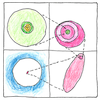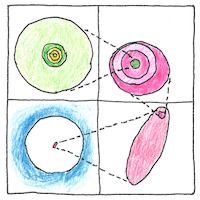Jan Oort
cosmology

|
Oort cloud
Comets form with their solar system, not afterwards, said Jan Oort. When a star coalesces, it attracts a vast spherical cloud of debris, said Jan Oort. Therefore, the source of the comets that wiz by us has to surround us, said Jan Oort.
Vast space
The next nearest stars are over three light-years further away deep in the vastness of space. But billions of comets are presumed to orbit, billions of icy planetesimals are presumed to spin, trillions of fragments of ices, amonia, and methane are presumed to mill about within a light-year in all directions from the Sun.
Butterfly effect
Small galactic perturbations send members of the Oort cloud sailing toward the Sun except for which one may claim no water or life would exist on Earth. Other examples exist, although many are fictional. We people just live our lives.



In addition to predicting the Oort cloud, Jan Oort discovered the galactic halo, calculated the center of the Milky Way, and was the first to find evidence for dark matter. Although Jan Oort predicted the existence of the Oort cloud in 1950, it has not yet been directly observed. Nevertheless, you should search the news this fall for Comet ISON, assumed to be a one-time visitor from the Oort Cloud.
See also in The book of science:
Readings in wikipedia:
Other readings: